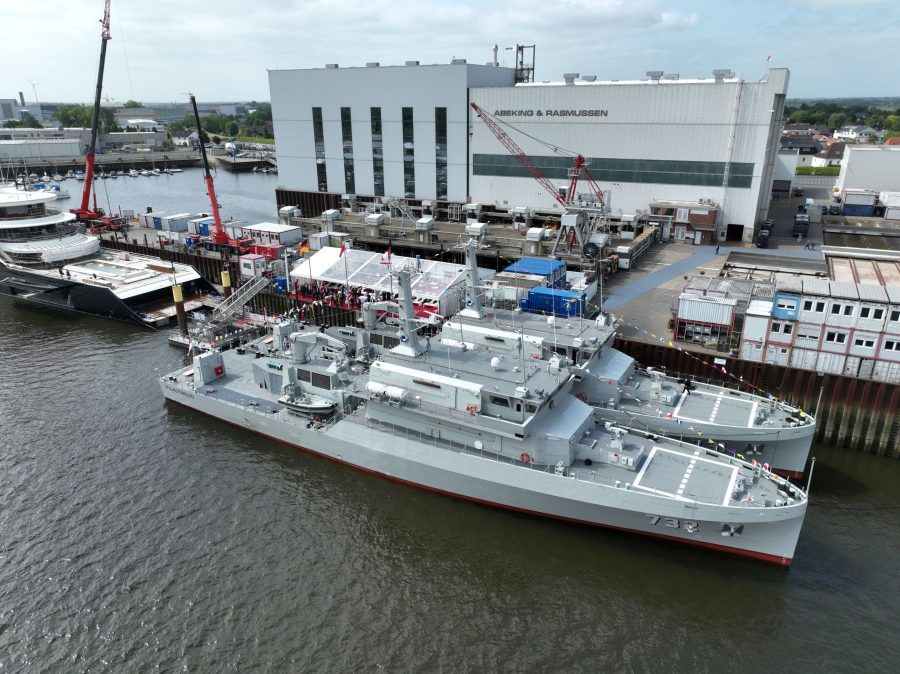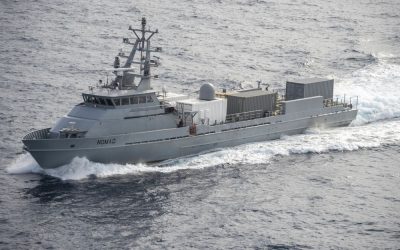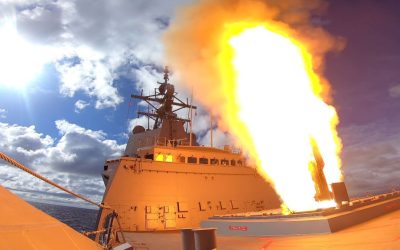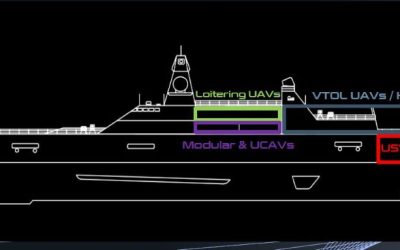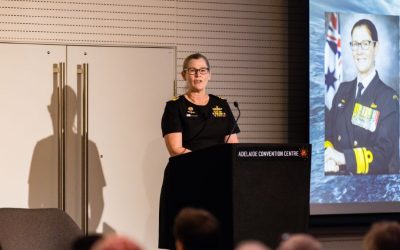Newbuilds are the latest in a long line of mine warfare vessels the German yard has built.
Abeking & Rasmussen, a German shipyard that has a long history of building mine countermeasures vessels, has delivered the latest in a series of newbuilds of this type of vessel to the Indonesian Navy.
The shipyard’s first mine warfare vessel was designed more than 100 years ago, and the first vessel it built, a 16.5m minesweeper, was commissioned in 1917. Since then, it has delivered more than 360 minesweepers to navies all over the world.
In 2020, the Indonesian Navy signed a contract for the construction of two mine warfare vessels and, three years after the contract was signed, the two vessels have been delivered on time.
In July 2023, hull numbers 6508 and 6509, KRI Pulau Fani (731) and KRI Pulau Fanildo (732), departed from the German yard on the dock ship Combi Dock I on their way to their deployment area. Once there, they were commissioned by Abeking & Rasmussen personnel, working alongside the Indonesian Navy.
The vessels are based on the Germany shipbuilder’s MHV-60 design, which is derived from the German Navy’s Frankenthal-class mine-hunting vessels and have a length overall of 61.4m, breadth of 11.1m and a design draught of 3.3m.
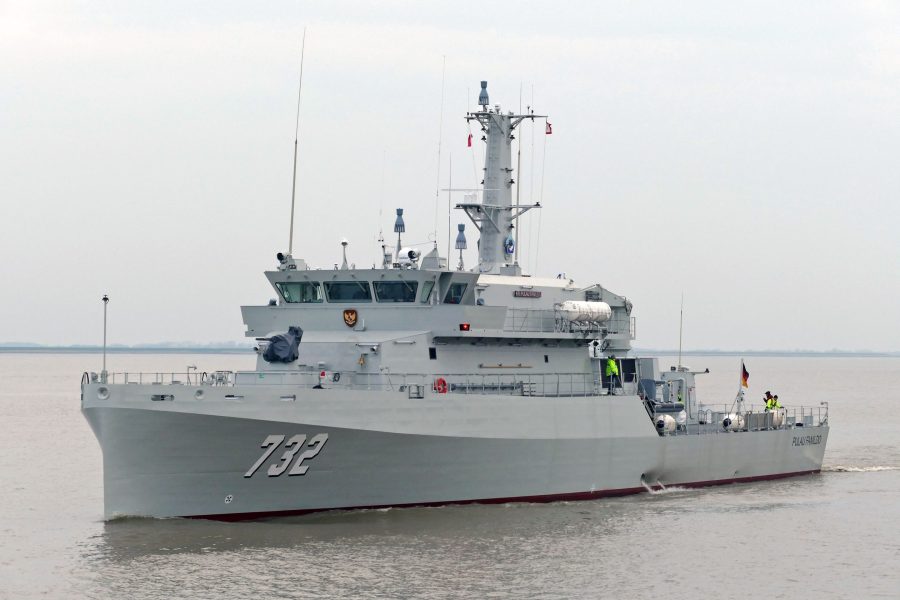
The new vessels are based on the Germany shipbuilder’s MHV-60 design, which is derived from the German Navy’s Frankenthal-class mine-hunting vessels.
Due to the materials used in their construction – they are constructed out of non-magnetic steel of a type Abeking & Rasmussen is well used to using when building this kind of unit – the vessels have a minimal magnetic signature.
The Indonesian vessels are fitted with a bow thruster and controllable-pitch propeller to ensure excellent manoeuvrability – particularly during mine-hunting operations – and have a maximum speed of more than 20knots, enabling them to undertake other roles, such as patrol and the protection of maritime borders. They have a MAN hybrid propulsion package system consisting of a pair of MAN 12V175D-MM diesel engines and an AKA hybrid power take-in system for silent operation while conducting manhunting operations.
The new vessels are equipped with two remotely operated vehicles and an autonomous underwater vehicle (AUV) in combination with a hull-mounted sonar to ensure that all phases of the mine warfare chain – detection, classification, identification and neutralisation – can be successfully completed. The size of the units is such that other unmanned systems can be integrated on board in future. They have a Synapsis NX navigation and bridge system, integrated SYNTACS command and control system.
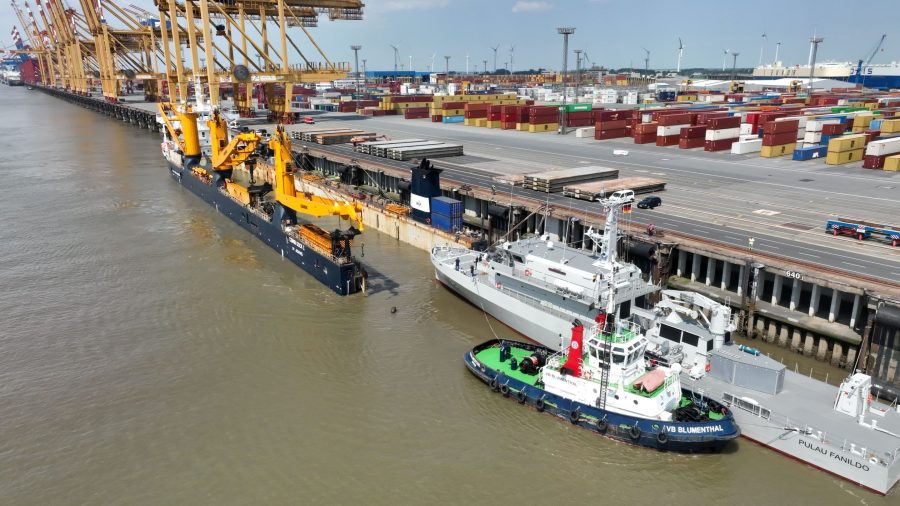
KRI Pulau Fani and KRI Pulau Fanildo departed for Indonesia on the dock ship Combi Dock I
A new feature of the contract for Abeking & Rasmussen was the training of the crews for the vessels. To this end, a warehouse was converted into a training centre and more than 100 crew members for the mine-hunting vessels trained over a four-week period at the shipyard.
This enabled the crew members for the vessels to be familiarised with systems and technology on board. In addition, there were daily theoretical sessions at the training centre, combined with practical sessions on board, to prepare the crew as best as possible for handover. The training content was provided by Abeking & Rasmussen staff and system suppliers.
